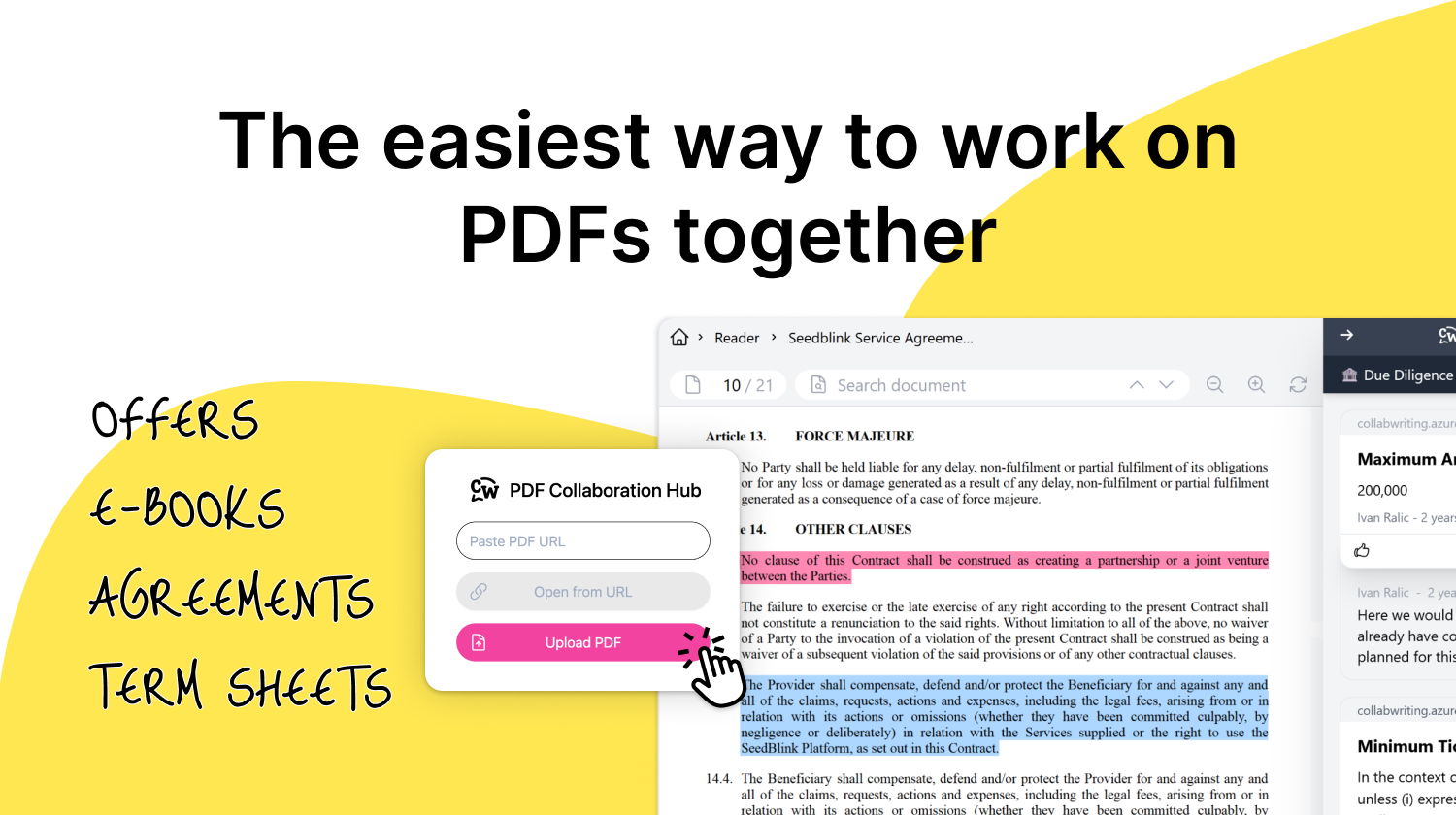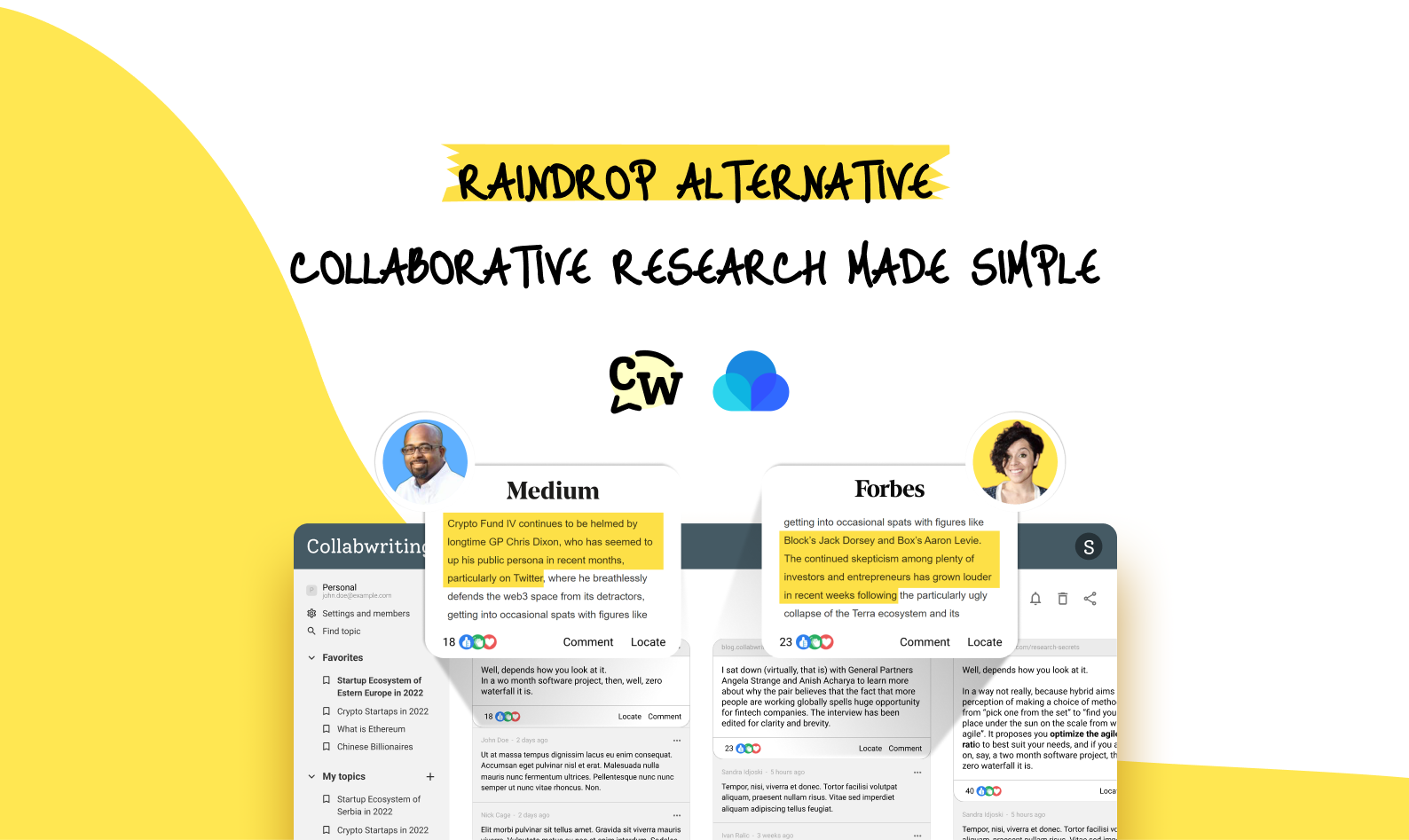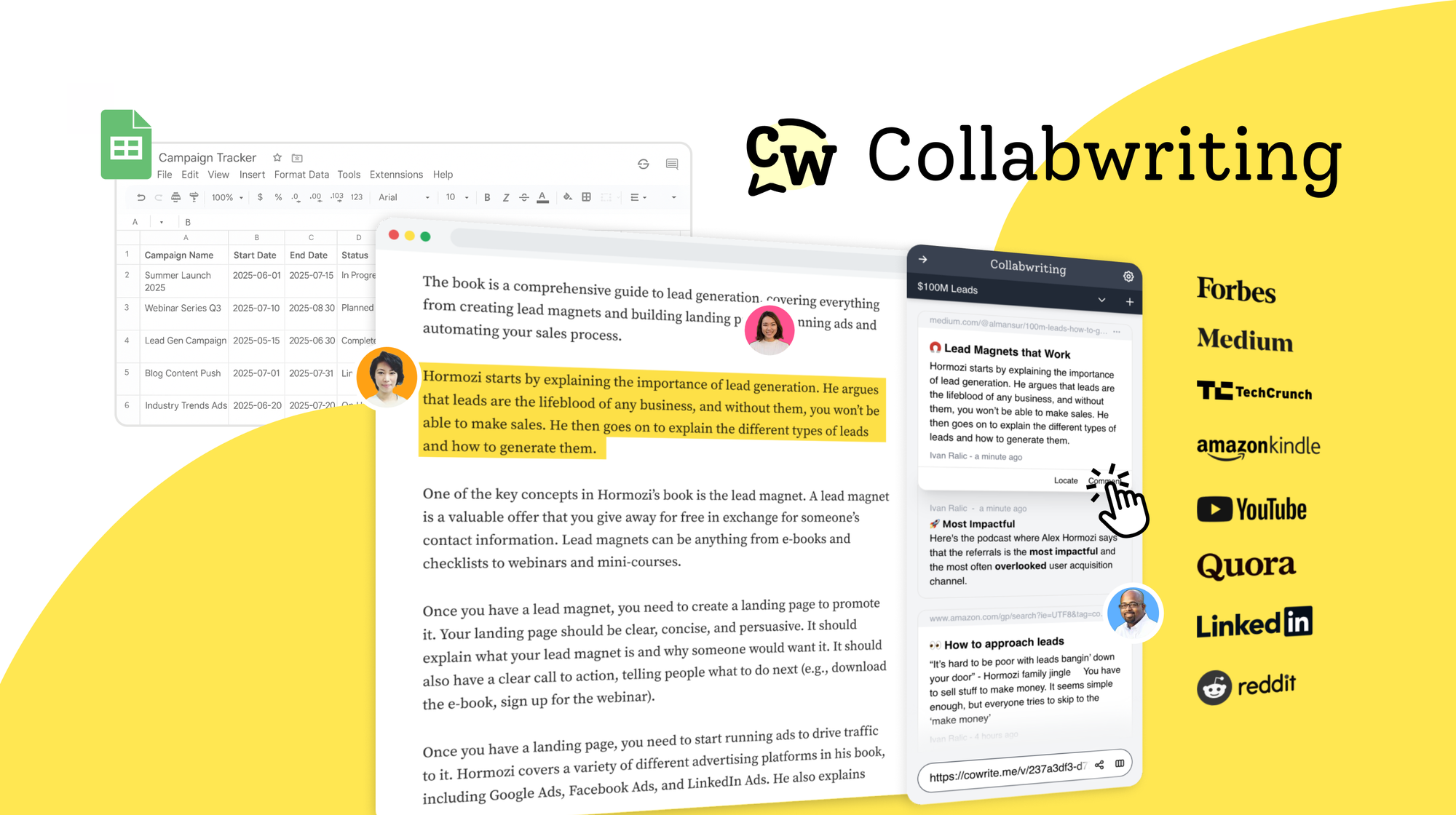Effective knowledge management is essential for an organization's success, allowing employees to exchange information, expertise, experiences, and insights. This collaborative culture fosters creativity, teamwork, and innovation.
While many companies understand these benefits, creating a culture where knowledge is freely shared can still be difficult, especially when new technologies like generative AI are involved.
Research conducted in 2023 found that 47% of employees don't know where to find the information they need or don’t have permission to access it. This problem is often due to poor knowledge management and outdated technology.
Additionally, knowledge hoarding - when people intentionally keep information to themselves - also makes sharing difficult. Solving these issues is essential for organizations to benefit from knowledge sharing fully.
What is knowledge hoarding?
Knowledge hoarding happens when individuals or groups purposely keep valuable information to themselves instead of sharing it. It's a choice to limit access to important knowledge, sometimes consciously, sometimes unconsciously.
People hoard knowledge for different reasons, but no matter why, it's a common issue in many workplaces. Unfortunately, it can hurt the company's performance overall.
Why do employees and managers hoard knowledge?
Employees may hoard knowledge because they fear losing job security, want to maintain power, or simply don't trust colleagues.
Managers sometimes do this too, which creates an even bigger problem - teams feel blocked and disempowered.
In some cases, outdated systems and platforms unintentionally encourage managers to hoard points of knowledge, because the tools make it difficult to document or share information transparently.
Why knowledge hoarding is harmful?
Just like the people on Hoarders, you might not realize you have a problem.
Think about all those moments when you pause to ask, "Sarah, how do I reset my password?" or "Mark, where's the template for the monthly report?"
These may seem like minor interruptions, but they're really about employee empowerment.
You stop, get the information, and continue. However, these small pauses add up to a significant productivity drain for you and your company, all because of knowledge hoarding.
Information is locked away in specific places, accessible only by certain people, creating unnecessary barriers and inefficiencies.
Knowledge hoarding is common but harmful. Here's why.
Bottlenecks will slow you down
When information is controlled by a few individuals, other team members have to stop and ask for it when they need it.
Imagine your workflow coming to a standstill while you walk over to your colleague's desk to ask, "John, where's the file for the project update?" You wait while he finishes his conversation, and by the time you get the info, you've already lost track of why you needed it.
This constant stopping and starting disrupts productivity and wastes time.
This decline in speed and productivity comes with a hefty price tag. When work isn't produced quickly enough, deadlines are missed, and customers become disappointed.
But there's a deeper issue at play here.
When individuals can't access information when they need it, their productivity takes a hit. They feel like they're not in control of their own progress, undermining their sense of ownership and autonomy in their tasks.
This negatively impacts your company culture. Employees who feel restricted are less engaged, less inclined to share ideas, and less likely to voice concerns. Promoting employee empowerment grants them greater control over their work, nurturing a culture of teamwork and mutual support.
Document. Everything. Always.
One of the top priorities for you to implement is a tool that allows complete documentation of all necessary information. Not only will this boost your team's productivity, but it will also address all the previously mentioned issues effectively.
Furthermore, documenting all critical aspects establishes a knowledge base accessible to every new employee, ensuring seamless onboarding and consistent access to essential resources.

Collabwriting - Shareable Notes on Web Pages and PDFs
Collabwriting allows you to gather all your online sources in one place. Just highlight, save, and collaborate with anyone on any content you find online.
No more endless scrolling, no more lost insights, just simple, structured knowledge at your fingertips.
You're wasting your team's potential
You may believe you're promoting collaboration with brainstorming sessions and a communal whiteboard. However, if certain team members hoard knowledge, you're missing out on many opportunities for empowerment and sharing among everyone.
Knowledge hoarding limits communication to discrete methods like emails, sticky notes, or meeting summaries. This prevents a continuous, real-time exchange of information. Consequently, when you urgently need information, you're left scrambling because you lack immediate access to your team.
How to prevent knowledge hoarding in the workplace?
If knowledge hoarding is causing problems in your organization, you're probably eager to stop it. But how?
To tackle knowledge hoarding, you need both a good system for managing knowledge and a culture that encourages sharing.
A solid knowledge management system needs four things:
- People - they hold the knowledge.
- Processes - determine how knowledge is shared.
- Technology - supports accessibility and documentation.
- Company culture - sets expectations for sharing.
People hold the knowledge, processes determine how they share it, and technology supports sharing and accessing that knowledge.
Building that culture requires:
💡 Leaders leading by example, sharing knowledge and setting clear expectations
💰 Investing in the right tools, such as AI-powered enterprise search or tools for knowledge sharing
🎢 A commitment to continually improving the knowledge management process
🤸♀️Creating a collaborative environment where employees from different departments or teams can work together on projects
Ultimately, knowledge hoarding works against building a culture of knowledge sharing. Effective knowledge management is essential for moving your business forward.

How can knowledge management help?
Dealing with knowledge management challenges might feel like a lot, but taking a step-by-step approach can help you tackle them effectively and strategically.
Craft a pilot
Knowledge management is an ongoing journey, so don't expect your first update to be the final one.
Start by implementing your new processes with a small group of team members who regularly interact with others across your organization.
Keep track of progress and share it with key stakeholders. Gather feedback along the way to understand what's working well and where adjustments are needed.
This is a great chance to understand how your team will use the system and establish standards based on real experiences. Use this phase to ensure your changes align with your knowledge management strategy and continue to add value to the organization while fostering a culture of knowledge sharing.
Educate your team
Sometimes, what appears to be a problem with resources or systems is actually linked to insufficient training or confidence.
All team members must grasp the basics of your knowledge management system and procedures. They should also receive ongoing guidance on how to use these platforms effectively and contribute to them.
This is particularly important for content marketing and consulting teams, as consistent processes enable them to assist customers with complex issues more efficiently. Regular training fosters a culture of knowledge sharing and promotes open communication and collaboration among team members.
Use the right technology
Technology, like artificial intelligence, can be the key to improving how your team shares knowledge.
AI in knowledge management creates a faster, real-time network, making information easier to find and allowing users to solve problems independently. With the right platform, AI works alongside people, making sharing knowledge easier and more intuitive. This means everyone in your organization can access the right information when they need it.
Streamline information access
In modern knowledge management, just storing information isn't sufficient.
Employees should access answers swiftly and effortlessly.
Each year, employees can squander countless hours hunting for solutions that could have been readily available from a colleague or within a knowledge base.
Establishing a communication framework that allows rapid question-asking and issue resolution is crucial. Implement a process that links employees with subject matter experts to tackle technical problems. Clearly define preferred communication channels for teams, and periodically review their effectiveness.
Promote teamwork
Incorporating collaboration into your knowledge management strategy boosts both. Offer fresh chances for teams to share their expertise and resources, whether it's to speed up innovation, streamline workflows, or improve knowledge exchange.
This approach is especially helpful for industries with cross-functional R&D teams.
Break down silos
In many organizations, valuable knowledge remains trapped in silos. This problem often goes unnoticed but can hardly impact innovation, productivity, and knowledge retention.
Teams spend precious time searching for information, unaware that their colleagues elsewhere in the company might have the answers they need.
Additionally, expertise from subject matter experts may not be documented or shared widely, posing further risks to the business.
Providing an easy and effective way for teams to access information breaks down these silos and fosters collaboration and knowledge sharing.
Employees who understand the value of communication and sharing their knowledge are typically more engaged and productive.
Explain the benefits for your team
Good knowledge management benefits everyone in your organization. Explain why your strategy matters, both for the organization as a whole and for individual teams and members. Make it clear how your knowledge management plan connects to the company's overall goals.
Create a way to measure how each person contributes and engages with the system. This can help identify experts who can really help build up the organization's knowledge.
For example, show the marketing team how they can find key information faster with a good knowledge management system. They'll benefit from having a starting point for making decisions in seconds, rather then starting from a blank slate.
Measuring engagement can also show where the system and teams are doing well and where they can improve. As people get more used to the system and see its value, they'll use it better and more often.
Make sure to point out how your knowledge management plan helps individuals as well as the whole organization.
FAQ
What is knowledge hoarding?
Knowledge hoarding occurs when individuals or groups in a company purposely keep valuable information to themselves instead of sharing it. It's a choice to limit access to important knowledge.
What is information hoarding at work?
Information hoarding at work is when employees or managers keep documents, insights, or processes hidden, creating bottlenecks and slowing productivity.
Why do people hoard knowledge?
People hoard knowledge for various reasons, including fear of losing job security, desire for power or control, lack of trust in colleagues, or simply not recognizing the importance of sharing information.
How can knowledge management help combat knowledge hoarding?
Knowledge management helps by creating systems and processes for documentation, encouraging a culture of sharing, and using technology to make information easily accessible. It ensures that valuable knowledge is available to everyone when they need it.
What are the key components of a good knowledge management system?
A solid knowledge management system needs 4 main components: People, Processes, Technology, and Company Culture. These elements work together to ensure effective knowledge sharing and accessibility.
How can AI improve knowledge management?
AI can improve knowledge management by automating information gathering, making knowledge more accessible, and providing real-time solutions. It can create a faster and more intuitive network for knowledge sharing.
What steps can organizations take to stop knowledge hoarding?
- Implement comprehensive documentation tools.
- Educate and train employees on the importance of knowledge sharing.
- Use AI-powered technology for better information access.
- Foster a collaborative environment and break down silos.
- Set clear expectations and lead by example.
What benefits do employees gain from good knowledge management?
Employees benefit from easier access to information, improved efficiency, better collaboration, and overall empowerment. A good knowledge management system helps them feel more in control of their tasks and fosters a supportive work environment.
What should organizations consider when starting a knowledge management initiative?
Organizations should start with a pilot program, track progress, gather feedback, and make necessary adjustments. Educating the team and ensuring alignment with the overall strategy is crucial for long-term success.





![The Best Tool for Collaborative Research in Content Marketing Teams [2026]](/content/images/2025/12/image--5-.png)

![5 Tools Marketers Use to Organize Research - Compared [2026]](/content/images/2025/11/cover-4-1.png)

![Build Credibility in Research: Smart Way to Verify Information and Track Sources Easily [2025]](/content/images/2025/10/covers-for-blog--7--1.png)

![How Marketers Can Turn LinkedIn Content into Collaborative Research [2025]](/content/images/2025/10/covers-for-blog--8-.png)
![Best Readwise Alternative for Personal & Team Research [2026]](/content/images/2025/09/Frame-814--3-.png)

